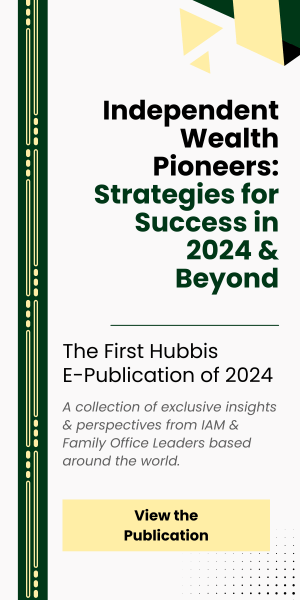Bain & Co’s Avishek Nandy Surveys the Challenges and Opportunities around Elevating & Scaling the Investment Offering

Avishek Nandy of Bain & Company
May 4, 2023
Avishek Nandy is a Partner based in Bain’s Singapore office, working in the firm’s Financial Services practice. He leads Bain’s Wealth and Asset Management sector in Asia Pacific. He focuses on full potential transformations, with a client portfolio that encompasses many of Southeast Asia’s largest financial services entities. He was also a natural to invite as an expert speaker to sit on the panel of the March 30 Hubbis Digital Dialogue that debated the elevation and scaling of the investment offering. We have summarised some of his valuable insights in this short report.
There are numerous challenges and opportunities around transforming and scaling the investment offering. The region’s wealth management community is jostling for position amidst the continued growth of private wealth in Asia, as incumbents embrace the rapid democratisation of private wealth across new segments of wealth, and as they also face up to the threats of big brand institutions that are at the forefront of intensifying competition, including from new entrants who are agile and are targeting a variety of wealth management market niches in the region.
The rapid expansion of the mass affluent market segment in Asia means wealth managers and private banks are keen to ‘democratise’ their services and their investment offerings across a wider audience of clients. Delivery of relevant, personalised, and timely investment products and associated advisory suite is essential.
Bringing it all together
Avishek first talked about differentiation, noting that differentiation cannot just be on the products and propositions. “It is the overall holistic services that you bring to the clients and banks that help achieve that, whether it's the value-added services, whether it's credit, or whether it is all of these things together in the service, combined with the digital experience, I think that is what really moves the needle.”
He then addressed the question of how in practice a wealth manager will set about the challenge and the process of scaling and improving its investment offering. “The focus has to be a starting point around the advisory-led approach,” he advised. “Clients need to feel that you are bringing structured advice, leveraging your insights and your tools in order to make those types of recommendations, versus coming with an underlying sort of mandate of pushing a particular product, which is a criticism we hear from the client side regularly.”
Mind the gap…
He added that the challenge is to put that advisory-led approach in the right sort of value chain and that requires the right technology to enable that. “There are many house views and portfolio recommendations, but there is all too often a clear gap between what the head office or the CIO office is thinking compared to the insights and messages actually being delivered to the client.” Technology in the form of the right digital solutions and protocols can help bridge that gap.
He said when clients are being literally bombarded with numerous insights and lots of news on specific asset classes but wondered why the ‘so what?’ or next steps or advised actions are too often lacking.
Advisory-led insights
“How do you link those insights to actions?” he pondered. “How do you talk to clients at the right time when they are probably the most anxious about market volatility and other events? And how do you take that sort of advisory-led approach across the value chain, whether it is initial portfolio construction, and the advisory or through to the ongoing engagement. These are areas that banks need to do a lot better.”
Avishek observed that many banks and wealth firms also seek to be able to scale up their investment offerings.
“There are, as we all know, supply constraints in terms of the RMs and that affects banks’ ability to scale up the business, both in terms of client acquisition, and deepening the share of wallet with existing clients, both of which are vital objectives,” he noted.
“The growth that we see in terms of AUM or the market itself versus the supply growth, from an RM standpoint, or individual capability standpoint, means there is a significant gap to be bridged. This is probably one of the key issues that most wealth managers and private banks are grappling with.”
Real hopes for AI
Avishek turned his gaze on the evolution of AI, which he said is essentially at an inflection point. He said Bain & Co had entered a partnership with open AI on this topic, and they are having active conversations with clients. “The use case in wealth is definitely very promising, especially around RM/advisor empowerment and enablement, although perhaps less so on the direct to client enablement,” he commented.
He said, for example there are valuable AI use cases around preparing for client meetings, taking numerous sources of information that the RMs are bombarded with, synthesising it all and thinking about how then to convert that to the right type of ‘pitch’ to the client that will engage them and that has a significant impact.
He said, for example, there could be voice to text conversion and summary of the calls with clients that becomes essentially a summary like meeting minutes, and then extrapolate those into actions, into email drafts and so forth. “There are some very interesting productivity use cases that can really drive a lot of value in the near term,” he remarked. “It is clearly a promising area, especially for the human assisted model, and how AI can play a role in that.”
Far more to come
On top of that, more advanced AI capabilities centre on working with analytics engines or next-best-product offers, and making all that more sophisticated, but that is further down the road.
“Clearly, AI is not being used to full potential yet, but given the technology evolution and the pace at which it is developing, we do see that inflection point coming where this is going to be really picking up,” he explained. “However, the main concern that remains is how this all fits into the technology architecture and the security issues, the reliability of AI; I think those are things definitely top of mind for clients.”
He then turned his attention to closing remarks on designing the digital-first investment platform, or conceptualising it, noting that the education feature is coming out as one of the key aspects that the clients are looking at, according to Bain’s own research.
Are you hitting your targets?
He added that while everyone is talking about technology, they have invested heavily in technology, the big question is whether that technology is providing or delivering on the business case it was designed to deliver in terms of productivity outcomes, or additional benefits for clients.
“The centre of gravity needs to move from the back-end products, fusion engines to a lot more focus on what needs to happen in the front and the middle,” he explained. “We see still too much of a silo approach, for example banks where they have implemented digital like features, but those do not then integrate well with everything else that the bank does or integrate well with the RMs or the frontline. You really need to connect the dots across all of these things.”

Partner at Bain & Company

More from Avishek Nandy, Bain & Company
Latest Articles






